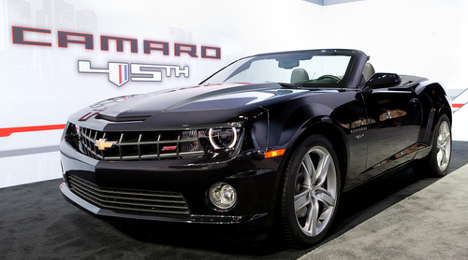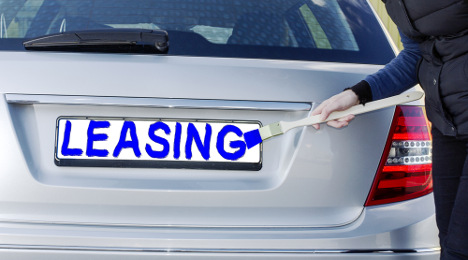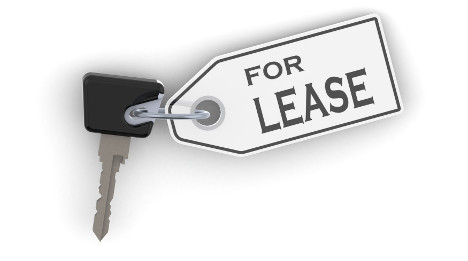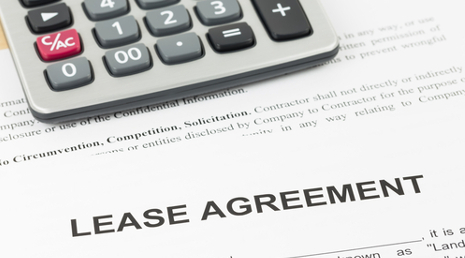LeasePlan Corp. — the European parent company of LeasePlan USA — announced on Thursday that it’s being acquired by a consortium of long-term investors.
Officials said the total value of the transaction amounts to about 3.7 billion Euros. They added the consortium plans to maintain LeasePlan’s diversified funding strategy going forward, supported by its investment grade rating.
The agreement is subject to approval by the relevant regulatory and anti-trust authorities, including the European Central Bank in consultation with the Dutch Central Bank.
The company indicated the closing is expected by the end of 2015 and is subject to obtaining these regulatory and anti-trust approvals.
LeasePlan highlighted the Consortium is composed of a group of long-term investors and includes:
— Dutch pension fund service provider PGGM
— Denmark’s largest pension fund ATP
— GIC
— Luxinva S.A., a wholly owned subsidiary of the Abu Dhabi Investment Authority (ADIA)
— The merchant banking division of Goldman Sachs
— Investment funds managed by TDR Capital
“The consortium supports LeasePlan’s existing long-term strategy and growth ambitions and recognizes the expertise of its workforce as a key asset for successfully executing this strategy,” officials said.
“The consortium brings financial services sector experience, additional strategic experience as well as a strong track record of successful long-term investing,” they continued.
“LeasePlan will continue its drive for the delivery of high quality fleet management and driver mobility services for its clients,” officials went on to say.
Looking back at LeasePlan’s 2014 performance, the company highlighted that its results showed a successful continuation of its strategic path of sustainable growth with total assets up 3 percent to 19.7 billion Euros and net profit up 14 percent to 372 million Euros.
The total number of vehicles under management increased from 1.37 million in 2013 to 1.42 million at the end of last year.
Eric-Jan Vink of PGGM, on behalf of the consortium, said, “As market leader in the global fleet management business, LeasePlan offers an attractive long-term investment opportunity. We are investing in the future of a company with an unmatched portfolio of market-leading assets, a highly knowledgeable and dedicated employee base and a sound strategy for the future, under highly experienced management.
“The consortium looks forward to supporting the management team as they focus on growing the business,” Vink added.
LeasePlan has been informed that the consortium intends to finance the acquisition with an equity investment of approximately half of the total purchase price, a mandatory convertible note of 480 million Euros and a cash-pay debt facility of EUR 1.55 billion Euros.
Officials noted the debt facility is being provided by an international syndicate of lenders. They added none of the debt raised by the investors would be borrowed by LeasePlan and the company would not be responsible for the repayment of such debt.
The consortium plans to maintain LeasePlan’s diversified funding strategy going forward, supported by its investment grade rating.
Furthermore, the consortium supports LeasePlan’s existing management and strategy as Vahid Daemi will continue to lead the organization as chief executive officer and chairman of the managing board.
“The change of ownership announced today marks a new era for our company and will enable LeasePlan to continue our successful journey and focus on executing our long-term strategy and growth ambitions,” Daemi said.
“We remain fully committed to providing high quality and innovative fleet management and driver mobility services to our clients worldwide,” Daemi continued.
Officials indicated LeasePlan will continue to operate as a strategically and operationally independent company. The consortium intends to appoint additional independent members to the supervisory board so that on the closing of the transaction the majority of the members of the Supervisory Board will comprise of independent non-executive members.
The new management added LeasePlan will maintain its strong focus on client and employee satisfaction.
“Current arrangements with the works councils and relevant trade unions will be maintained,” officials said. “The consortium has no plans to make material changes to locations where LeasePlan does business or conditions of employment of the workforce.”
If you’ve noticed your finance office contains a steady stream of customers in their 20s signing new-model lease contracts, don’t be surprised or alarmed. New analysis from Edmunds.com indicated millennial buyers opt to lease their vehicles at a higher rate than the overall buying population.
And for dealers in certain parts of Michigan, Minnesota and Wisconsin, the trend is even more apparent as the site’s findings suggest that millennials are more willing than older adults to sacrifice what analysts consider to be the long-term financial benefits of ownership to get into bigger or more luxurious vehicles that are typically more affordable through leasing.
According to Edmunds’ analysis of registration data provided by Polk, leasing has accounted for 28.9 percent of all new-vehicle purchases so far this year by millennials, who range in age from 18 to 34. The percentage exceeds the industry-wide lease penetration rate of 26.7 percent, and reflects a 46 percent increase in leasing by millennials over the last five years.
By comparison, the share of leasing among all shoppers has increased 41.7 percent during that period.
“Most millennials understand and accept that they’re on a tight budget and that they need to stick to it,” Edmunds.com director of industry analysis Jessica Caldwell said.
“But it doesn’t mean that their financial constraints limit them only to the most basic vehicles to get from Point A to Point B,” Caldwell continued. “If they see a chance to get into a nicer car while staying within their budget, they’re likely to explore that opportunity. In most cases, leasing opens the door to the bells and whistles that they couldn’t otherwise afford.”
Caldwell also pointed out there is a dramatic difference between what millennial shoppers can afford when they choose to lease compared to when they choose to buy.
According to a survey of millennials conducted in June by Edmunds and Morpace, a global market research firm with a large practice in the automotive sector, a majority of respondents (57 percent) said that they are willing to put no more than $2,999 down on a new-vehicle purchase. The survey also showed a similar majority (54.9 percent) said that they are willing to pay no more than $299 per month.
By inputting those budgets into Edmunds’ “How Much Car Can I Afford?” Calculator, shoppers who choose to finance their purchase are generally limited to vehicles priced at below $20,000.
On the other hand, shoppers who are willing to lease can apply the same upfront and monthly budget toward a vehicle priced as high as $35,000.
Other takeaways from Edmunds’ analysis of Millennial leasing behaviors include:
— Leasing is especially popular among Millennials living in some Midwest cities.
In the most dramatic example, Edmunds found that millennials in Grand Rapids, Mich. are 33 percent more likely to lease their new-vehicle purchase than the city’s general car shopping population.
Other top 50 markets where millennials are more likely to lease are Minneapolis-St. Paul (30.5 percent more likely) and Milwaukee (26.4 percent more likely).
|
Lease Penetration by Market
(Jan-Apr 2015)
|
|
Rank
|
Market
|
Millennials
|
All
Buyers
|
Millennials
vs. All Buyers
|
|
1
|
Grand Rapids-
Kalamazoo, Mich.
|
50.0%
|
37.7%
|
+32.9%
|
|
2
|
Minneapolis-
St. Paul, Minn.
|
39.0%
|
29.9%
|
+30.5%
|
|
3
|
Milwaukee
|
41.0%
|
32.4%
|
+26.4%
|
|
4
|
Portland, Ore.
|
20.9%
|
16.8%
|
+24.8%
|
|
5
|
Salt Lake City
|
26.8%
|
21.9%
|
+22.2%
|
|
6
|
Sacramento, Calif.
|
21.4%
|
17.7%
|
+21.2%
|
|
7
|
Indianapolis
|
38.4%
|
32.1%
|
+19.7%
|
|
8
|
Charlotte, N.C.
|
22.1%
|
18.6%
|
+18.9%
|
|
9
|
Seattle-
Tacoma, Wash.
|
21.8%
|
18.4%
|
+18.6%
|
|
10
|
Columbus, Ohio
|
37.5%
|
31.8%
|
+18.2%
|
—Millennials tend to gravitate toward leasing certain brands compared to the overall car buying population.
Edmunds found that millennials who acquire a new Ram truck, for example, are 30 percent more likely to lease it than the general population. Other top brands that millennials are more likely to lease include GMC (26.1 percent more likely) and Lexus (23.9 percent more likely).
|
Lease Penetration by Brand
(Jan-April 2015)
|
|
Rank
|
Make
|
Millennials
|
All Buyers
|
Millennials
vs. All Buyers
|
|
1
|
Ram
|
16.7%
|
12.8%
|
+30.5%
|
|
2
|
GMC
|
36.2%
|
28.7%
|
+26.1%
|
|
3
|
Lexus
|
65.5%
|
52.9%
|
+23.9%
|
|
4
|
Jaguar
|
70.5%
|
57.8%
|
+21.8%
|
|
5
|
Cadillac
|
43.9%
|
36.4%
|
+20.5%
|
|
6
|
Buick
|
35.9%
|
29.8%
|
+20.4%
|
|
7
|
Subaru
|
16.4%
|
13.7%
|
+19.9%
|
|
8
|
Scion
|
30.3%
|
25.4%
|
+19.2%
|
|
9
|
Mini
|
27.8%
|
23.6%
|
+17.8%
|
|
10
|
Acura
|
53.8%
|
46.0%
|
+17.0%
|
— The Millennial leasing rate outpaces that of the total population in every one of Edmunds’ 24 vehicle segments except for one: compact cars.
An estimated 25.5 percent of all new compact cars registered by millennials this year were leased, compared to 26.2 percent of new compact cars registered by the general population.
It appears as though Independence Day weekend is the ideal time to target the summer whims of convertible lovers.
That’s according to an analysis from NADA Used Car Guide released Thursday, which highlighted a few manufacturer financing incentives that should prove particularly appealing to July 4 shoppers who enjoy the top-down side of life.
“If horsepower and performance are on their requirement list, shoppers might consider 72 months of zero percent financing on Chevrolet’s Camaro,” said Larry Dixon of NADA Used Car Guide. “Paying nothing in interest over the life of a loan helps you reach a positive equity position sooner.”
NADA Used Car Guide’s executive analyst Jonathan Banks added: “If your taste in vehicles changes often and you don’t want to put any money down on a purchase, Mazda is leasing their MX-5 (Miata) roadster for 24 months with nothing down.”
Here are a few other top-down suggestions from NADA Used Car Guide:
- MINI Cooper S Convertible or Cooper S Roadster – 1.9 percent APR for 36 months from MINI Financial Services, with no payments for up to 90 days.
- Volkswagen Beetle Convertible – 0.9 percent APR for 60 months.
For a list of solid convertible options for both new- and used-vehicle shoppers, check out the organization’s Perspective: New and Used Convertibles for Under $35,000 here.
Leasing’s resurgence and market impact doesn’t look like it will end any time soon.
Ironically, however, it appears to be making more noise in the truck market and among mainstream brands than their car and luxury counterparts.
Relatively speaking, of course.
“Leasing’s influence on industry sales shows no sign of relenting; it made up 28 percent of new-car sales in June. Interestingly, leasing is bucking traditional sales trends by playing a bigger role in new truck sales,” said Jessica Caldwell, director of industry analysis at Edmunds.com
“Even though trucks are leased at relatively lower rates, small truck leasing is up 34 percent from last June and large truck leasing is up 4 percent year-over-year,” she added.
Along with improving fuel-efficiencies on the truck side, a favorable gas-price environment and low interest rates, the fact that leasing is near 30 percent is one of a few factors allowing the ongoing shift towards trucks and SUVs and away from smaller/traditional midsize cars, says Kelley Blue Book senior analyst Alec Gutierrez.
“With low interest rates, with leasing still close to 30 percent (of new-vehicle retail volume), not to mention the fact that gas is at $2.80 per gallon, it’s really helped to foster an environment where trucks and SUVs have grown in terms of interest from consumers,” Gutierrez said during a conference call with the media on Wednesday.
Conversely, consider what’s happening in some of the smaller car segments in the new-car market overall.
Caldwell noted: “The industry's smallest cars continue to struggle. Subcompact cars averaged 99 days to turn last month, which is a near record high and 21 days higher than in June 2014. Small cars likely are feeling pressure from the new crop of compact and subcompact SUVs like Honda HRV and Jeep Renegade, which have proven popular, especially with Baby Boomers.”
Luxury vs. Mainstream Leasing
Lease penetration on the luxury side has seen growth, just not as steeply as the increases on the mainstream side, Gutierrez said during the call.
The mainstays within the luxury market are still netting lease rates between 50 percent and 60 percent, which certainly still beats lease penetration levels for non-luxury brands. However, the rate of growth has been stronger for non-luxury brands.
Gutierrez estimates that your typical luxury brand has seen a 3- to 5-percentage-point increase in lease penetration in the last year (“depending on who you’re looking at,” he said), while some of the mainstream brand has increased as much as 5 to 7 percentage points.
“The numbers are growing, but they’ve mostly stabilized and are not growing as fast as the non-luxury sector,” Gutierrez said.
Leasing drives loyalty.
This was one of several benefits of the leasing boom mentioned by Experian Automotive’s Melinda Zabritski during an interview with Auto Remarketing at January’s NADA Convention & Expo, and new loyalty data released this week by IHS Automotive indicates this certainly came to fruition during the remainder of the first quarter.
The growth in leasing was among a handful of factors mentioned by IHS as “key drivers” of a 10-year high in auto brand loyalty, which reached 52.8 percent in Q1.
“Leasing is just such an interesting product. As long as it’s well understood and there is consumer education around it, I think it has a lot of positives,” Zabritski said in the January interview.
“You see those lower monthly payments (on the consumer side) and you’ve got — from the OEM and brand standpoint — the increased loyalty,” she added.
In this week’s report from IHS, Tom Libby starts with the loyalty boost from a wider selection from OEMs then goes into how ramped-up leasing leads to a more loyal customer.
“The increased number of different models within brands makes it easier for households that may need a different type of vehicle to maintain their loyalty,” said Libby, who is the manager of automotive loyalty and industry analysis for IHS Automotive.
“In addition, the increased popularity of leasing since the downturn has helped significantly as lessees are consistently more brand loyal compared to retail owners,” he added.
IHS points out that leasing is a decade-long high with a year-to-date penetration of 22.5 percent. That’s nearly 62 percent stronger than the trough of 13.9 percent back in 2005, according to IHS.
Lease penetration has climbed in 24 of 32 segments in the past decade, according to the firm’s analysis of new-vehicle registrations. And quite a few are seeing upswings of more than 20 percentage points, IHS said.
“This leasing trend is due, in part, to greater cooperation between OEM captive finance arms and their operating divisions,” the IHS analysis said.
Of course, leasing is just one of several factors pushing increased brand loyalty. Here are some of the others playing a role:
- As mentioned earlier, greater choice has had some influence. IHS indicates that there are 12 percent more models available in the U.S. this year than there were in 2005, with luxury brands playing a big part in that. The thought is, if a shopper buys from a brand, and then when he or she returns to the market, that brand has more choices, there’s a greater likelihood the customer will remain loyal, IHS said.
- New-vehicle quality, which can lead to customers being more pleased with their selection and thus more likely to buy from that brand again.
- Automakers have put more focus on loyalty and customer satisfaction, as marketers have realized retaining a customer is more cost-effective than going after one from another brand, according to IHS.
- Between 2010 and 2014, there was 49-percent drop in the number of households that returned to market while currently owning a vehicle from a discontinued brand, IHS said. The logic is that an owner of a discontinued brand technically has to be “disloyal by default.” Point is, there has been a significantly fewer number of consumers put in that situation.
Car buyers are getting their hands on pricier vehicles more easily these days, and according to Edmunds.com, the record-pace leasing numbers are playing a big role, along with cheaper credit and a handful of positive overall economic factors.
In a data report shared this week, Edmunds counts economic trends like lower employment, consumer confidence in the economy and lower fuel prices among the drivers steering shoppers back to pricier rides, particularly trucks and SUVs.
And don’t expect this comeback to be short-lived.
“The cost-conscious, fuel-efficient mentality from the recession and early recovery years has faded,” said Edmunds chief economist Lacey Plache.
“We expect these economic trends to continue into next year at least, so there’s every reason to believe that shopper preferences for larger and more expensive vehicles will continue along the same path that we’ve seen emerge in the past year or so,” she added.
And then there’s the whole financing ballgame.
Cheaper credit and the lease boom are among “the biggest factors that are making it easier for shoppers to afford more expensive vehicles,” Edmunds indicated.
In May, 9.5 percent of new-car buyers who used financing did so through a zero-percent loan, according to Edmunds. This marked an eight-month high.
Leasing, meanwhile, continues to skyrocket. Year-to-date new-vehicle lease penetration is above 28 percent, according to Edmunds, and is on track to an all-time annual high.
In May, the average monthly payment on leased vehicles was $70 lower than the average on financed vehicles.
One twist to these findings that Edmunds discovered: while trucks and SUVs are getting a shot in the arm, the same can’t be said for the luxury market. The majority of luxury segments have had relatively flat consumer appetite numbers the past two years.
“Today’s car shoppers are taking a step or two beyond the more financially conservative choices made in recent years, but we aren’t generally seeing the mainstream buyers reach into luxury the way we did before the economic crisis,” Plache said. “That was a time when many aspirational shoppers stretched their finances to get a high-status nameplate, now they are instead buying mainstream vehicles with tech options and creature comforts that allow them to spoil themselves just a little.”
However, Edmunds does note that luxury buyers have shifted toward the higher price points of the luxury spectrum, like mainstream buyers have done on the mainstream side.
If your franchised dealership showroom is located in Michigan, Texas or Massachusetts, it’s probably not uncommon to see new metal leaving the lot attached to a lease. But if your new-car store sits in New Mexico, West Virginia or Arkansas, the leasing volume likely is considerably less.
Experian Automotive analysts broke down the top 10 and bottom 10 states based on the percentage of new vehicles leased during the first quarter. According to the latest State of the Automotive Finance Market report, the top 10 included:
1. Michigan: 62.7 percent
2. New Jersey: 55.7 percent
3. New York: 50.7 percent
4. Texas: 44.6 percent
5. Washington: 44.0 percent
6. Connecticut: 40.1 percent
7. Ohio: 37.5 percent
8. Massachusetts: 36.9 percent
9. California: 34.1 percent
10. New Hampshire: 32.8 percent
“When you look at where vehicles are being leased, Michigan has always been a very heavy leasing state in part because of the manufacturer programs that you’ll see in that state,” said Melinda Zabritski, Experian’s senior director of automotive finance and a keynote speaker for the SubPrime Forum later this year during Used Car Week.
“Overall those top states for leasing do have a higher concentration of population densities,” Zabritski continued during a conversation with Auto Remarketing on Tuesday.
Meanwhile, the bottom 10 states settled this way after Q1:
1. Arkansas: 1.0 percent
2. Utah: 1.7 percent
3. Vermont: 3.4 percent
4. West Virginia: 3.5 percent
5. Alaska: 4.5 percent
6. South Dakota: 5.7 percent
7. New Mexico: 6.1 percent
8. Mississippi: 8.1 percent
9. Louisiana: 8.4 percent
10. Missouri: 10.3 percent
“When you look at the states with a lower concentration of leasing, some of it is an impact of the trends for vehicles in those markets as well as some of the geographic dispersity of those markets,” Zabritski said.
“Places like Utah, there are very few heavy population concentrations. You’ve got Salt Lake City and then big miles being driven,” she continued. “Some are states that are not very conducive to the restrictions of leasing.
“Some of the Southern states, just overall have some lower credit scores for the overall population,” Zabritski went on to say. “When you look at leasing overall, it tends to be a very prime product. So some of the states at the bottom tend to be ones where overall you don’t necessarily have that much really strong credit so you’ve got the subprime market leaning more toward a purchase rather than being able to qualify for a lease.”
But what if the leasing industry made an adjustment? That’s an option Swapalease.com executives are placing before finance company executives.
Swapalease.com reported lease credit approvals for May softened by 11.5 percent on a sequential basis as 69.6 percent of vehicle lease shoppers gained approval by the bank to proceed with a lease transfer compared with 78.6 percent during April.
Site officials indicated the year-to-date lease credit approval rate at 67.4 percent has performed slightly better than same time a year ago when 65.9 percent of lease shoppers were gaining approvals.
And despite some continued volatility each month, Swapalease highlighted the year-to-date approvals rate has steadily climbed each month since March when it dipped to a low of 63.4 percent.
Subprime customers continue to drive a large makeup of the lease declines each month, but Swapalease.com executives believe banks may want to consider relaxing their credit standards for approval.
Swapalease executive vice president Scot Hall pointed out the economy has continued to improve, unemployment continues to grow and delinquencies have remained in check throughout the economic rebound.
Furthermore, Hall noted subprime shoppers interested in taking over a lease would only have payment obligations typically less than 24 months, and their ability to make payments would actually help improve their credit profile.
“We’re hopeful that the industry will consider new ways to extend lease options to customers even with less-than-stellar credit,” Hall said.
“The industry has expanded risk environments to very long-term loans, and we feel the environment for risk would be muted in an environment of less than 24 months even for a subprime credit profile,” he went on to say.
New vehicles are leaving franchised dealership showrooms with lease contracts at a pace never previously seen by Experian Automotive.
According to the latest State of the Automotive Finance Market report, analysts reported on Monday that leasing continued to increase in popularity during the first quarter, jumping from 30.22 percent of all new vehicles financed in Q1 2014 to a record high of 31.46 percent in Q1 2015.
During the same time period, the average monthly lease payment dropped to $405, down from $412 the previous year.
Furthermore, leasing credit loosened, as the average new vehicle lessee had a credit score of 718 in Q1 2015, down from 721 the previous year.
But if the delivery isn’t associated with a lease lasting 36 months or less and buyers keep their vehicles for the duration of the installment contract, dealerships and finance companies likely won’t see these consumers again for another purchase until 2020 or possibly beyond — an assertion stemming from the record-setting term metrics Experian also reported on Monday.
Analysts determined longer-term loans for both new and used vehicles are on the rise. The average loan term for new and used vehicles originated during the first-quarter increased by one month, reaching new all-time highs of 67 and 62 months, respectively.
Findings from the report also showed that longer loans — those contracts with terms lasting 73 to 84 months — accounted for a record-setting 29.5 percent of all new vehicles financed, marking an 18.6-percent rise above Q1 2014 and the highest percentage on record since Experian began publically tracking this data in 2006.
Long-term used-vehicle loans also broke records, with loan terms of 73 to 84 months, reaching 16 percent in Q1 2015, rising from 12.94 percent the previous year — also the highest on record.
“While longer term loans are growing, they do not necessarily represent an ominous sign for the market," said Melinda Zabritski, Experian’s senior director of automotive finance and a keynote speaker for the SubPrime Forum later this year during Used Car Week.
“Most longer-term loans help consumers keep monthly payments manageable, while allowing them to purchase the vehicles they need without having to break the bank,” Zabritski said. “However, it is critical for consumers to understand that if they take a long-term loan, they need to keep the car longer or could face negative equity should they choose to trade it in after only a few years.”
Experian pointed out the average amount financed and the average monthly payment for a new vehicle also increased to record heights.
The average new-vehicle loan was $28,711 in Q1 2015, compared to $27,612 in Q1 2014. The average monthly payment for new vehicles also rose, moving from $474 in Q1 2014 to $488 in Q1 2015.
After dissecting all of the leasing and installment contract data, Zabritski said, “Increases in vehicle financing are signs of a strong automotive market.
“By gaining a deeper understanding of current financing trends, lenders are able to stay competitive and better meet the needs of the marketplace, while consumers can use the data to become more educated on the different vehicle financing options and make a more informed purchasing decision,” she went on to say.
Zabritski mentioned a trio of other findings from Experian’s latest report, including:
— The average credit score for a new-vehicle loan dropped slightly, going from 714 in Q1 2014 to 713 in Q1 2015. The average used vehicle score moved slightly higher, from 641 in Q1 2014 to 643 in Q1 2015.
— The average used-vehicle loan was $18,213 in Q4 2015, up from $17,927 in Q4 2014.
— The average interest rate for new vehicles was 4.71 percent in Q1 2015, up from 4.54 percent in Q1 2014. Similarly, the average interest rate for used vehicles increased from 9.01 percent in Q1 2014 to 9.17 percent in Q1 2015.
Aside from the condition of the car, its mileage is going to be the most important element in a used-car shopper’s purchase, according to an Edmunds.com survey.
And that likely has not gone without notice by automakers, who Edmunds believes will “lean on low-mileage to offset the negative effects of ballooning used inventory.”
In its Q1 2015 Used Vehicle Market Report, Edmunds said this has been part of a strategy by OEMs in protecting residuals, given the rise in lease penetration.
“Higher residuals help to curb the risk of weakened prices caused by a higher volume of off-lease vehicles,” the company noted in the report.
Automakers have responded to these used supply increases by lowering the mileage caps on lease contracts, Edmunds said, as they aim to keep residual values strong and lease terms steady.
Edmunds data shows that average annual allowed lease miles has decreased in the first quarter of each of the last seven years, with the latest quarter marking the first time it has dipped below 11,000.
Meanwhile, average lease terms in Q1 for the past four years have stayed between 36.2 months and 36.6 months.
But the question is, has this strategy worked? In terms of the residual value impact, said Edmunds director of industry analysis Jessica Caldwell, time will tell.
However, she adds, the mileage restrictions don’t seem to be stopping people from leasing.
Lease penetration remained above 25 percent last year, and there were 4.5 million leases written, according to the Edmunds report. There have now been five straight years of increases in annual lease volume, as the industry has rocketed back from a trough of 1.7 million leases in 2009. And lease penetration has also been on the mend during this time frame.
These gains have helped lead to a nice pool of used inventory for the market.
“For the past few years, off-lease vehicles have provided a much needed shot in the arm to the depleted used vehicle population,” Edmunds said in the report.
“But leasing’s historical pace threatens serious ramifications for the used-car market going forward. At these unprecedented leasing levels, off-lease vehicles are expected to continue to account for millions more near-new vehicles than the used market has ever seen,” it adds.
The report shows one specific example of where the used-car pricing impact been felt: “near-new” (ages 5 years or younger) car segments.
For instance, retail prices for near-new subcompacts fell 2.8 percent year-over-year in the first quarter, according to Edmunds. Meanwhile, near-new compacts were off 2.0 percent, near-new entry sports cars fell 2.1 percent and near-new midsize cars dipped 1.6 percent. Prices on near-new large cars dropped 0.5 percent.
Not only has there been “amplified leasing” of these vehicles, thus driving supply, but consumers are also moving over to truck segments since gas prices are down.
All of this works to lower prices.
“The recent surge in leases for small and midsize cars has spurred an avalanche of post-lease vehicles returning to the used car market, and with larger supply comes lower prices,” Caldwell said. “There’s no sign that this surge in leasing will slow down any time soon, so shoppers can continue to expect prices of these cars to stay relatively low as they continue to flood the secondhand market in the coming months and years.”
However, as Caldwell and the Edmunds report note above, the industry is responding to protect residuals.
As dealers gear up for Memorial Day weekend sales, lease options might be top-of-mind for many shoppers with automakers ramping up incentives.
Swapalease.com reported this week that “aggressive” monthly deals are being put on domestic cars and trucks, many of which come out to lease payments of under $200 per month.
"Aggressive lease deals have continued into May, and we expect the number of deals with payments under $200 monthly to grow even more as we head into Memorial Day sales," said Scot Hall, executive vice president of Swapalease.com. "Domestic brands in particular are showing an increased level of aggressiveness to offer attractive payments for car shoppers looking to stay at a low budget."
In fact, the company noted 15 popular cars and trucks are being offered this month in that price cap.
Moreover, five new car lease deals are being offered for less than $149 a month, including the Chevrolet Malibu LT with a $0 down payment.
According to Swapalease, other cars offered at $149 monthly include the Nissan Sentra SV, Chrysler 200 Limited and Volkswagen Jetta S.These deals are applicable for either 36- or 39-month terms.
And for those shoppers in the markets for a SUV, dealers can turn to the Chevrolet Traverse LT two-wheel drive that is being offered for $189 per month, and the Chevrolet Equinox two-wheel drive LT for $199 a month.
As far as monthly drops in rates, this Malibu LT is out in front. This monthly payment dropped 41.4 percent compared to April deals, when it was offered for $254.53 monthly, according to Swapalease data.
The Chevrolet Traverse also saw a significant decline, with monthly rates dropping by 33.2 percent from May, as well as the Chrysler 300 rear-wheel drive, which is down 32.6 percent, and the GMC Yukon two-wheel drive SLE with a decline of 25.3 percent.
And though most of the May deals are for mainstream models, the Acura ILX is offering the best monthly deal across luxury segments with a monthly lease payment of $229 on a 36-month lease.












